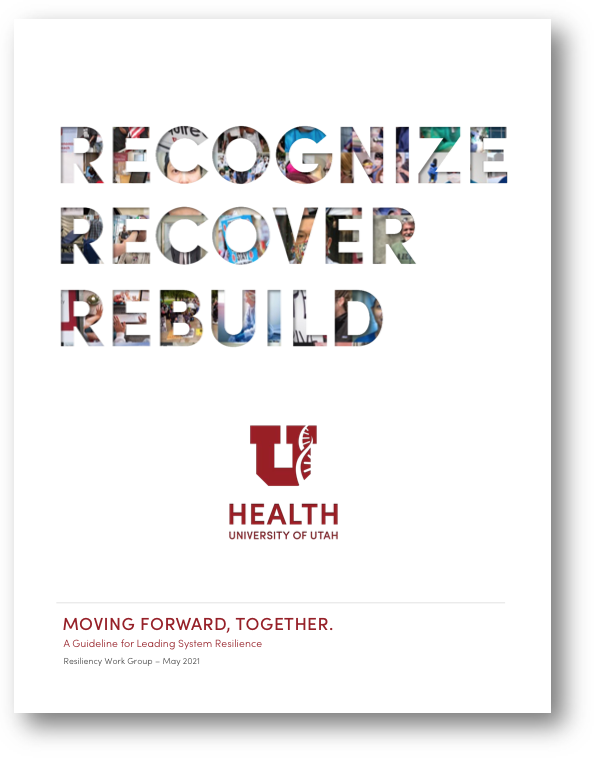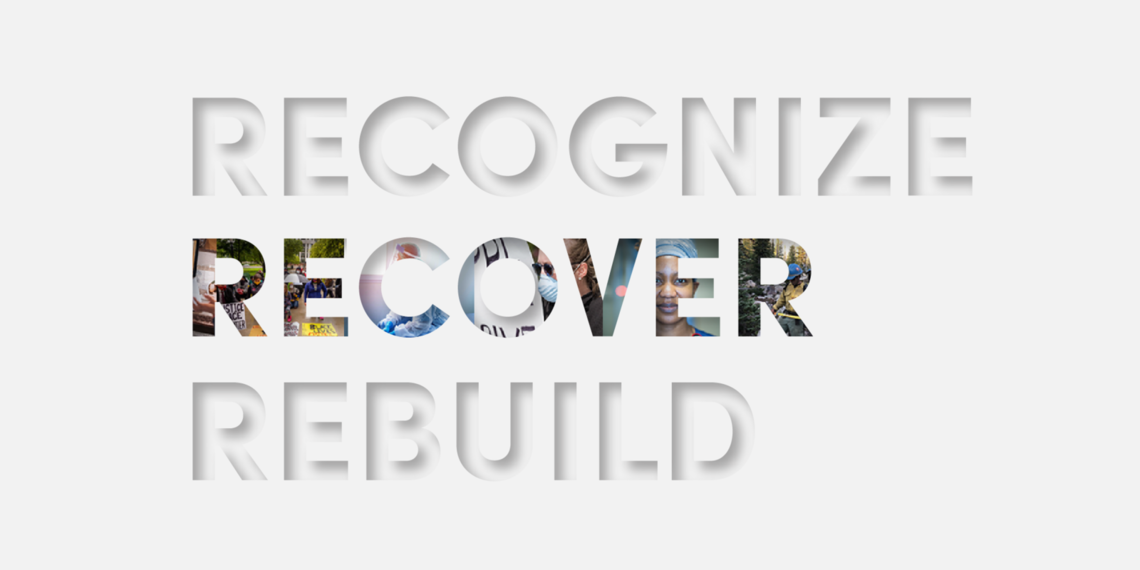
Learn more about U of U Health's strategy for well-being in Moving Forward, Together. A Guideline for Leading System Resilience.
hat we’re experiencing right now feels like a tug-of-war between “take a break” and “there’s a lot of work to be done.” These urgent and competing needs pose a significant challenge for leaders trying to prioritize well-being and get the job done.
To help manage this moment, here are four actions you can take to promote recovery within your team.
1. Acknowledge that recovery looks different for everyone
It is important to acknowledge that everyone’s experience and responsibilities are different right now. While vacations are wonderful, recovery right now might look like a brief weekend away or taking a weekday off to unwind. For some, it might be just an afternoon in the mountains or an hour in the backyard or even a simple moment of pause. Recovery is all of these things.
Reinforce the importance of micromoments—opportunities to take small actions that aid in everyday recovery, like turning off the pager or cell phone while you spend time with family and friends, or not checking email on a day off. Over time, these small actions add up to long-term gains.
2. Talk about recovery as a priority
Leading Resilience
One example of prioritizing continuous, public focus on well-being is University of Utah Health’s service lines, support services, and system planning, led by Alison Flynn Gaffney. Each month, they host “Team Talks” for the 2,500+ employees in their area. The time is reserved for taking care of themselves, each other, and having a bit of fun.
As leaders, we establish recovery as a priority by talking about it openly. Ask your team about their plans to take time off and encourage spending time away from work. Talk about your own plans and model the behaviors you want to see.
Set the precedent that your team’s health comes first. Ask about individual strategies for self-care. If you notice someone struggling, talk about what they may have done in the past when things have been tough. Consider sharing your own go-to strategies to manage when things get hard. And as always, if conversation goes beyond your comfort zone, help them access available resources.
3. Act by adjusting workload and job demands
First, identify the essential work—what can versus can’t wait. Consider what can be taken off the team’s plate in order to make the work manageable and sustainable right now.
Be considerate of time. Over the past year, virtual meetings have made it easy to gather quickly and informally. While there are many upsides to this shift, the downsides have been an increase in meeting frequency and movement away from helpful structures, like agendas, that keep discussion on task, provide clarity around meeting purpose and who should be present. It may be time to rethink how we gather for work.
4. Resist the temptation to skip recovery and jump to rebuild
In a recent Advisory Board article, the urgency to provide dedicated recovery time for health care professionals was likened to a controlled burn, used in forestry, to prevent larger uncontrollable fires in the future.
There is a real temptation to get going after feeling stalled for so long. And there is simply work that has to happen right now. What’s important is that we are strategic in how the work goes on and in considering what needs to happen right now and what can wait. We still have a long road ahead of us. Before we can fully rebuild, we need to learn to pace and think creatively about how to protect our workforce now and into the future.
Amy Locke
Altruism and collectivism got us through the first year of Covid-19. Now what? As anger and resentment bubbles up on the frontline, VA internist Amy Cowan addresses our short fuse by sharing a simple practice for leading daily huddles to foster a bridge to better understanding.
Dentist Gary Lowder has spent the past 36 years working with patients who suffer from jaw disorders that result in chronic pain. As faculty in the School of Dentistry, he’s passing along the power of vulnerability as a patient trust-building exercise with his trainees.
Chris Fairbank, director of organizational development, gives practical advice for using feedback from the Hospitals and Clinics WellCheck survey as a springboard for dialogue and growth, rather than a yardstick of personal leadership.
